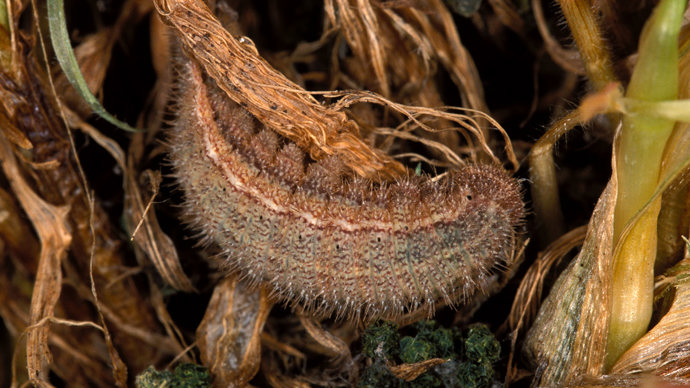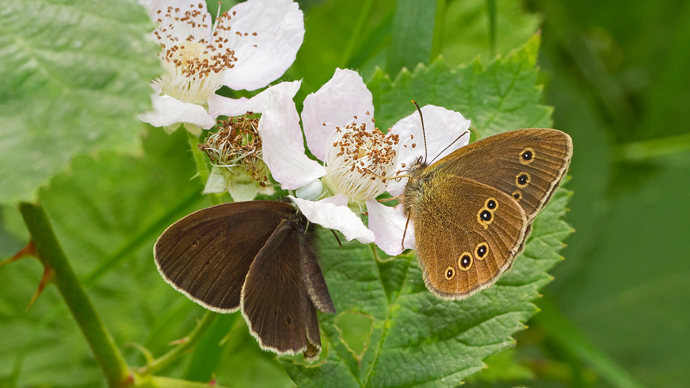Common name: ringlet
Scientific name: Aphantopus hyperantus
Family: Nymphalidae
Habitat: woodland rides and glades, riverbanks, road verges
Caterpillar foodplants: various grasses
Predators: birds, amphibians, reptiles
Origin: native
With chocolate brown velvety wings and a delicate trim, the ringlet is an understated yet attractive butterfly. Look out for its trademark bobbing flight as it travels through woodland glades.
Common name: ringlet
Scientific name: Aphantopus hyperantus
Family: Nymphalidae
Habitat: woodland rides and glades, riverbanks, road verges
Caterpillar foodplants: various grasses
Predators: birds, amphibians, reptiles
Origin: native
Adults: a dusky, chocolate brown butterfly with a white margin on the wings and a soft, velvety appearance. There are small circles on the underside of the wings which vary in size and number; usually there are three on the forewings and five on the hindwings. These give the butterfly its name.
Caterpillars: cream with a brown stripe down the centre and covered in hairs.
Not to be confused with: the male meadow brown, which has orange markings and only a single spot on each wing.

Credit: Papilio / Alamy Stock Photo
The female butterfly lays her eggs in a maverick style, throwing them down in the undergrowth from mid-air. They are pale yellow at first, before turning a light brown colour. Around two to three weeks later the eggs hatch and the caterpillars emerge.
The male ringlet is almost black when young, fading to brown as it ages.
Ringlet butterflies favour damp, shaded areas in woodland rides and clearings, as well as road verges and meadows. They are found throughout the UK although they are absent from the north of Scotland.

Credit: Rod Williams / naturepl.com
Keep an eye out for their trademark bobbing flight as males patrol woodland rides seeking newly emerged mates. As this species lives in large groups, sometimes over 100 can be seen at once.
The ringlet butterfly is not currently threatened and is on the increase in many areas.